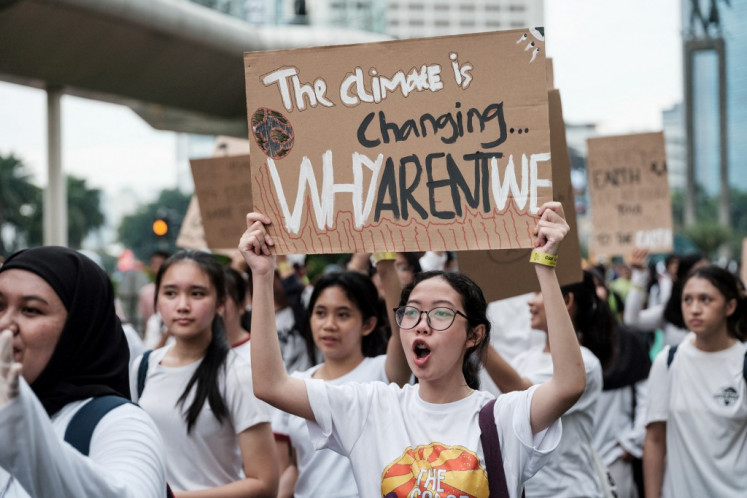Limited water supply spells future trouble
The lack of a clean and reliable water supply is a serious problem in Jakarta
Change Size

T
he lack of a clean and reliable water supply is a serious problem in Jakarta. Besides inadequate infrastructure and mismanagement in water distribution, the limited supply of raw water also haunts the future of Jakartans’ most basic need.
City-owned operator PD PAM JAYA president director Erlan Hidayat said, during a joint press conference recently, the capital had been growing fast but its infrastructure could barely keep up.
Erlan said it was even worse when it came to water as supply was limited , while demand was increasing every single day in line with the growing population.
“The biggest problem is Jakarta depends on water sources from other regions, so this problem cannot be solved by our city alone,” he said.
Two private operators — PT PAM Lyonaisse Jaya (Palyja) and PT Aetra Air Jakarta (Aetra) — currently manage piped water for the western and eastern parts of the city respectively, depend on neighboring areas for supply. Aetra obtains its water supply from Kanal Tarum Barat, aka Kali Malang, in Bekasi, West Java, while Palyja purchases water from the Cisadane River in Tangerang, Banten.
Besides stagnant supplies, both companies also suffer from water loss in the form of non-revenue water (NRW), such as from leaking pipes and water theft.
Aetra reported a NRW loss of around 29 percent, while Palyja reported 39.3 percent. Both companies can only supply around 60 percent of its potential customers in each area.
Erlan said extending services and pipes would mean nothing if the city could not obtain additional water sources.
He added that reducing NRW lossess also took a lot of effort and investment. “In order to reduce NRW in the 12 worst areas by 13 percent, we need an investment of Rp 12.5 trillion [US$950 million],”
he said.
Aetra president director Muhammad Selim said the capacity of the company’s water treatment plant in Buaran, East Jakarta, currently was around 9,000 cubic meter per second (cms) and could be increased to 15,000 cms.
“We can actually increase our capacity to a maximum of 15,000 cms as long as NRW losses could be decreased 29 percent,” he said.
He added that increasing the capacity to 15,000 cms would be able to fulfill the need of 90 percent of residents in the eastern part of Jakarta.
Selim said his company was now also ready to build four reservoirs in Sunter, North Jakarta, with a capacity of 8,500 cubic meters.
“PAM Jaya and the city administration has agreed to the project, so we will start the first one soon,” he said.
Sunter will also supply water for the athletes village in Kemayoran, Central Jakarta, for the 2018 Asian Games.
Like Aetra, Palyja is also trying to find alternatives to increasing its supply. The company currently depends on Tangerang-owned water operator Perum Jasa Tirta for its supply.
“We have signed a cooperation with city-owned property developer PT Jakarta Propertindo to buy water from them,” Palyja president director Alan Thompson said.
He said the developer was building a water treatment plant in Hutan Kota, West Jakarta, with a 500-cms capacity.









